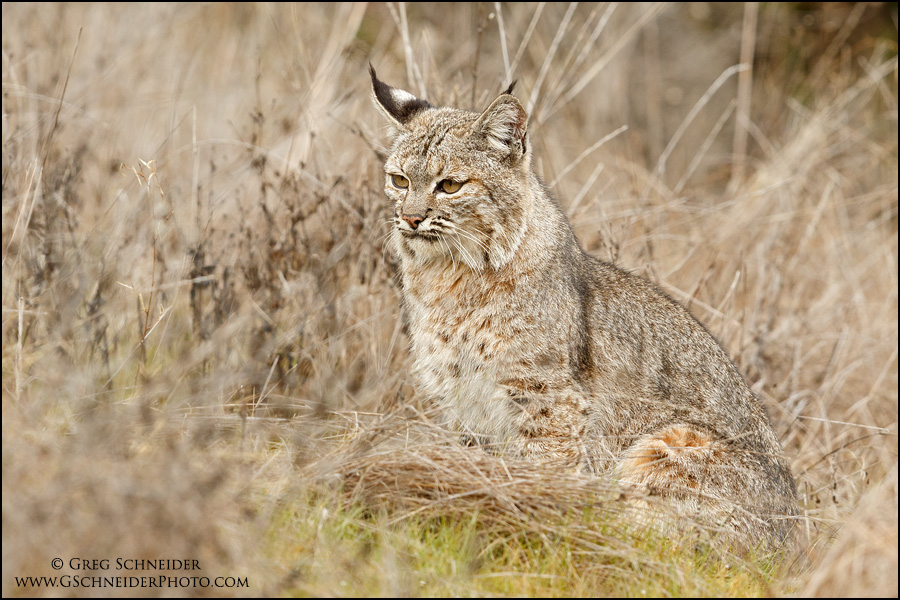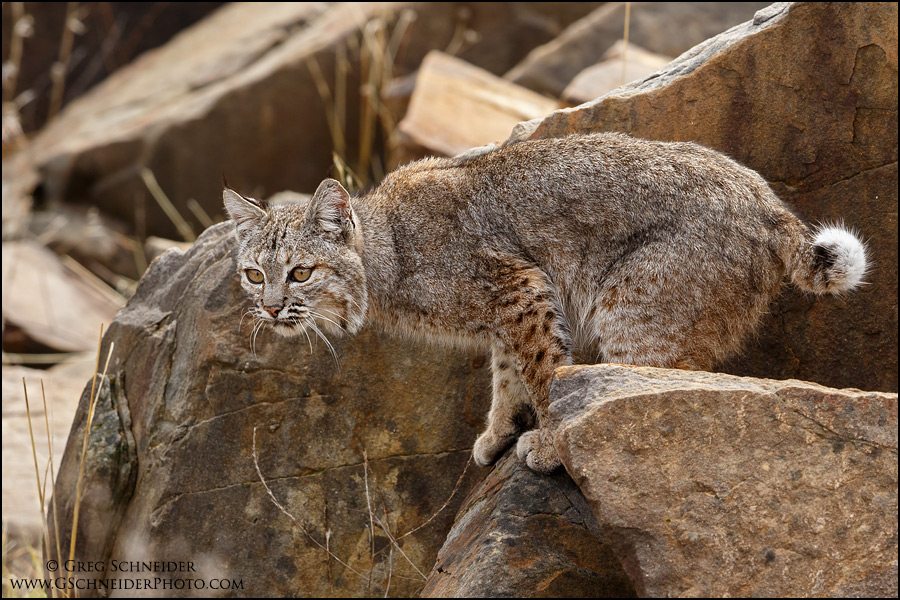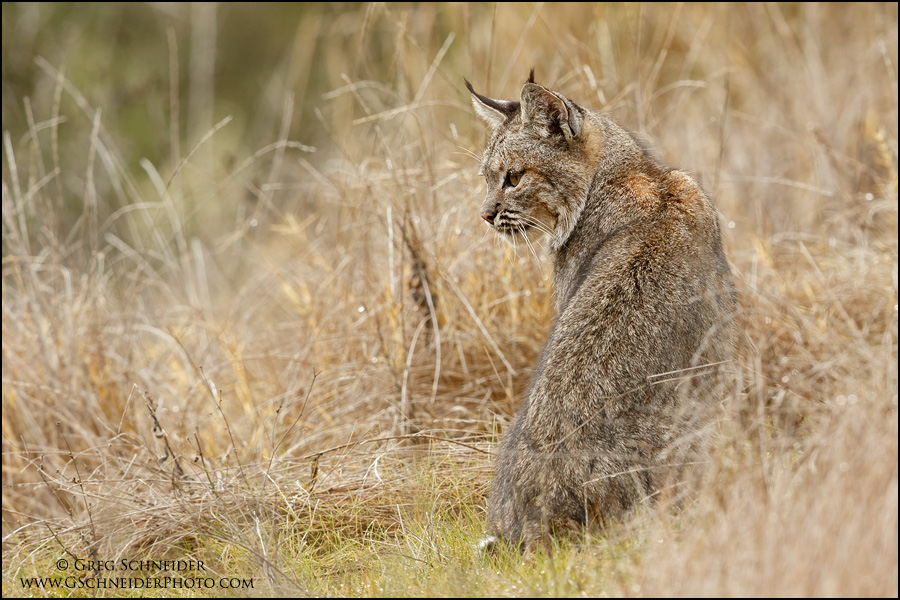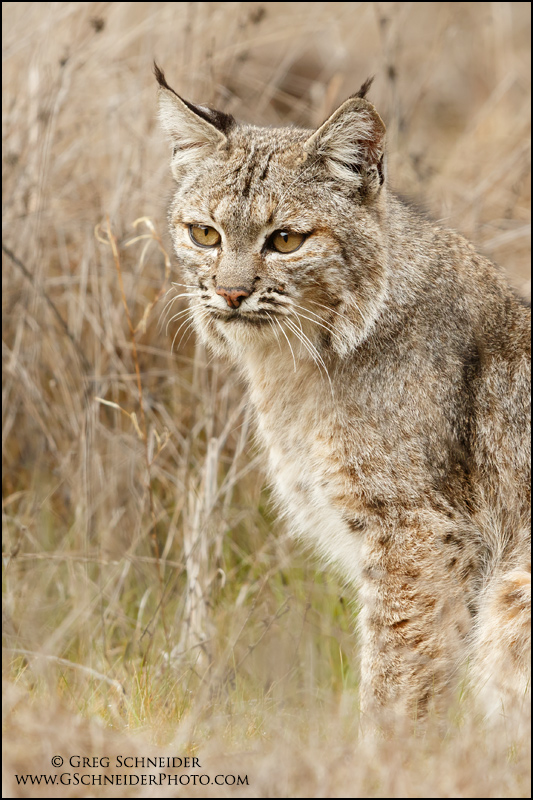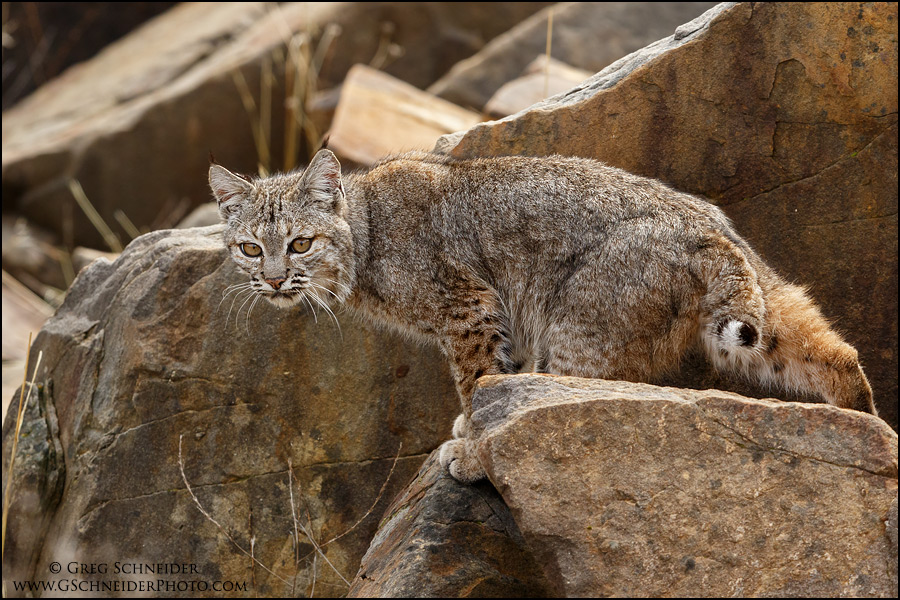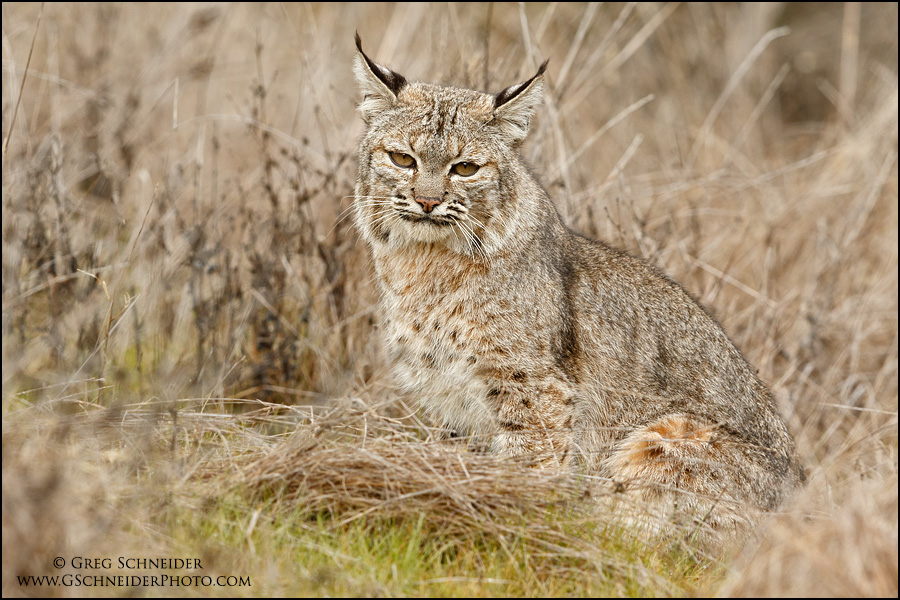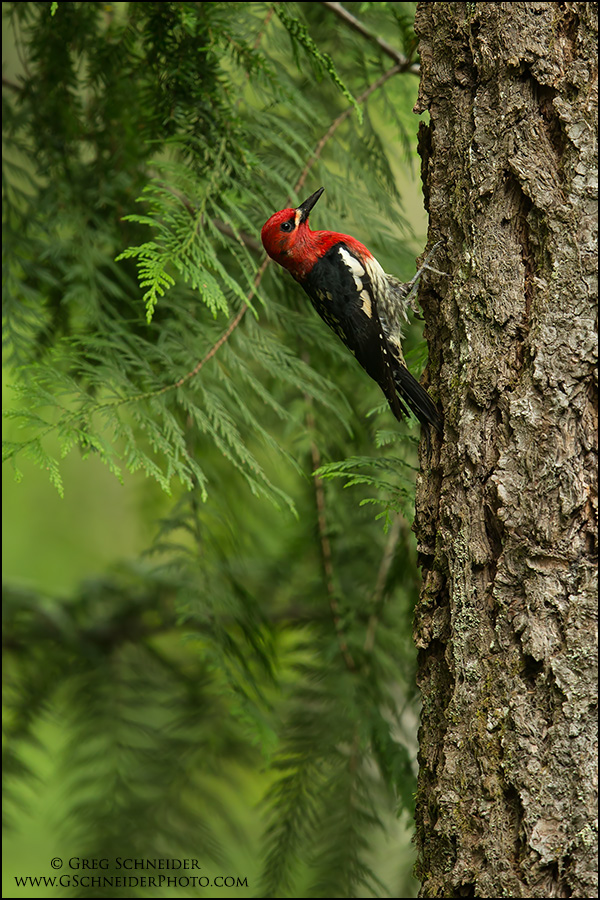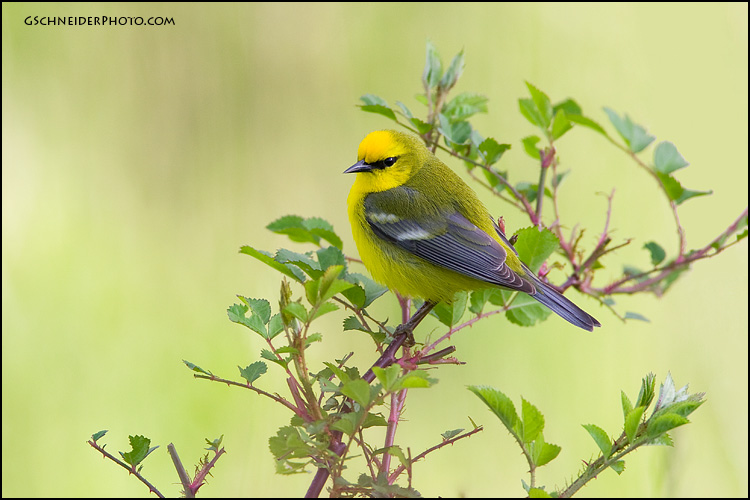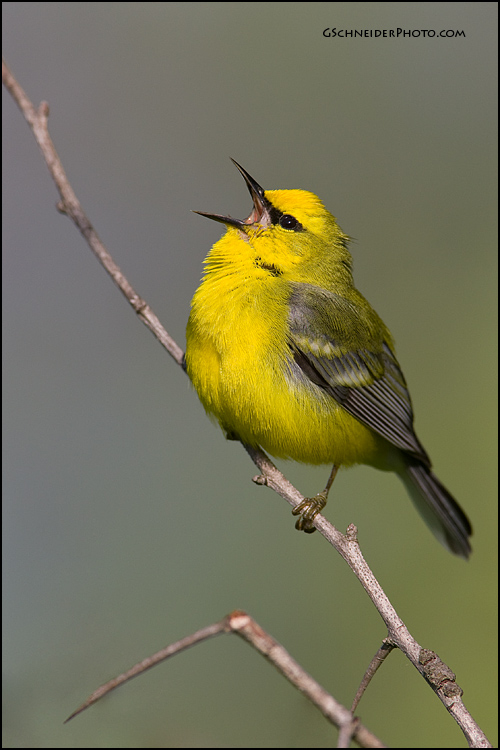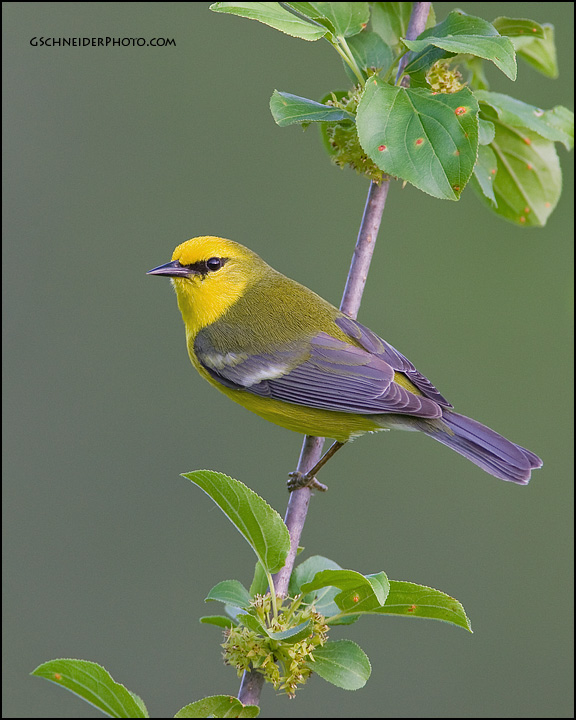Tagged: summer
Bobcat encounter
A few weeks ago while photographing birds in Central California’s scenic oak woodlands, my peripheral vision picked up movement closer to the parking lot. I quickly swung the camera around, thinking the fuzzy shape might be a fox, but to my astonishment saw the characteristic cat shape and tail of a bobcat. This was an animal I had never seen before, and was not expecting to obtain any good photos before it disappeared.
I quickly caught up to it as it began navigating its way down a boulder-strewn hillside. At this point I was able to photograph a few look back poses, and I started to plan where to position myself next. I had a rough idea of where the cat might be going, and was able to quickly walk ahead on an adjacent trail. As expected, the bobcat began walking through a grassy meadow after making its way down the boulders. It paused a few times, seemingly scanning for prey, and completely tolerant of my presence. It eventually sat down for a few minutes, then without warning ran off and could not be relocated.
In total I had 8 minutes with this individual, and I’m really pleased with the range of poses and photos I was able to capture in such a short length of time.
Red-breasted Sapsucker in habitat
I’ve had mixed success shooting red-breasted sapsucker on the west coast. Despite visiting several locations where other photographers have easily obtained great photos, I was always hampered by either not finding them, or having uncooperative birds.
On one occasion did obtain several photos, and although the distance was much farther than I would prefer, I used slight more creative cropping to frame the bird in a pleasing way. Traditionally the general rule of thumb would have been to crop with the bird in the lower left part of the frame, but to my eye that left me with far too much of the tree trunk in the frame. To me this gives a great perspective on the typical rain forest habitat this bird lives in.
Macro photography using a telephoto lens
While it’s not an obvious choice for closeups, a supertelephoto lens can be surprisingly capable at macro photography. It’s not possible to get close enough for extreme macro photography of small bugs, but other wildlife such as butterflies or snakes are very well suited to this method of photography. In the middle of the summer I was walking around trying to find birds to photograph, and although I failed with that, there were many monarch butterflies around. While I didn’t have an extension tube, I was able to get close enough by using a 1.4x converter on my 600mm lens. An extension tube would have made it possible to get even closer, so I’ve now made a point of carrying an extension tube with me, because you never know what opportunities might present themselves.
There are several advantages to using a telephoto lens. Not only can you blur the background more than you could with a short macro lens (say 100mm), due to the focal length compression, but you you can shoot at wider apertures and benefit from a higher shutter speed. Whereas most macro lenses will be shot at f16 or narrower, to ensure enough depth of field when close to the subject, a telephoto could be used at around f8. Additionally, thanks to the extra working distance, you are less likely to scare off your subject. In this case I was 10-20 feet away from the butterflies, and this made it far easier to photograph without them leaving.
Blue-Winged Warbler
As mentioned in my previous post, the Blue-Winged warbler is the “cousin” to the Golden-Winged warbler. Its habitat is quite similar, though it’s range is more southerly, yet expanding northwards. The Blue-Winged is exceptionally common in my area, and their buzzing song often emanates from the shrubbery, particularly any raspberry bushes. Despite their commonness, I have not photographed them too extensively, with the exception of one fantastic afternoon in the summer of 2008, in a field just minutes from my house. This particular male was extremely accommodating and allowed for many close views over the course of an hour or two. The species forages nearer to the ground than other tree-top dwelling warblers, making photography much easier, and affording closer views and better angles.
The Brewster’s warbler hybrid sometimes occurs in my area as well, and my one chance at photographing one was ruined by my inexperienced self having written it off as a first year Blue-winged in poor plumage. At least I’ll know for next time!
View more, or order a print at my gallery!
See more warbler images here
Golden-Winged Warbler
This spring I had the pleasure of having several opportunities to photograph one of the most attractive wood warblers, namely the Golden-winged Warbler. This dashing little beauty is sadly declining across its range, and being pushed northwards, due to its southerly cousin, the Blue-winged Warbler, which is moving northward, perhaps due to warming climates. Both are closely related, and where their ranges overlap they often create hybrids (Brewster’s and Lawrence’s warbler). These hybrids are typically less hardy than their pure species, and are not all that common.
Currently, the best place to find the Golden-winged warbler seems to be near the Canadian Shield area, or in northern Michigan. It can also be found south of these areas, but only irregularly. Thankfully, the Golden-wingeds seem to be holding their own in the northern areas, with the Blue-winged being a rare sight in the Shield. The threat is still potent, and there is a possibility that through hybridizing (cross-breeding) with the blue-winged race and reduction of the golden-winged gene pool, the golden-winged race may no longer exist in a decade or so, according to some experts. As it stands now, this species is classified as ‘near threatened’ by the IUCN.
